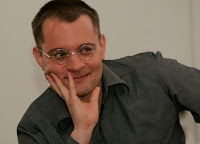Update: Accepted. 🙂 Now just have to find a way to pay for the trip.
Thanks to Mirko for the valuable feedback, to Jonathan for encouragement, and to Pirate Cat Radio, Baghdad by the Bay, for music to write by. I submitted this today for the MiT6 conference.
Ethereal Archives: The Evolution of Information Structures from Social Networks and Their Impact on Collective and Personal Identity
This paper explores how a collective archive may emerge from the individual digital memories of participants in social networks, facilitated by social software. Examples are drawn from social networks in northern California, particularly the SF Bay area, though being largely carried out online, these networks are actually much more widely diffused. These structures are described as “ethereal archives” because they are widely distributed, mainly linked through blog entries, microblogs, and other ephemeral locations in which content changes over time. At they develop, standard tags and terminology begin to emerge and also a shared understanding of the objects, events, and people being described. The evolution of these ethereal archives represents a response to the disappearance of space, both storage and geographical as a contraint on archives. Digital technology allows us to preserve our memories both easily and without the constraints of space, and at the same time to broadcast those memories through a variety of textual formats, along with photostreams, video collections and social networking sites that incorporate all of these.
Although this already huge and rapidly growing mass of information seems to have escaped the bounds of space, it is now constrained by time: the time it takes users to navigate, find, and attend to any one item. Harold Innis argued for the importance of communication over time, because these accumulations become an extension not only of personal, but of collective memory. Both individual and community identities are shaped and preserved in collaborative ethereal archives, made up of a few people’s photostreams, another’s blog, yet another’s video collection, and many others’ microblog feeds. While digital media allow communication of all kinds to be preserved, the volume of communication is now so great that much may be lost in a sea of texts, images, audiofiles, and videos. Users face three related problems: how to find information, how to choose from what they find the information most relevant to their purpose, and how to manage the accumulation both of their own information, and links to information provided by others.
As these materials accumulate, they may prompt the emergence of a community that shares particular interests, or expand what was once a small and physically proximal group into a much wider and more influential network. When people connect, their linked personal collections become an ethereal archive, dependent for its organization on social connections across the network expressed through links shared via numerous platforms. Events, objects and even people begin to generate folksonomic tagging across platforms, most often in the form of #tags and @names. Not surprisingly, clear examples of these ethereal archives have evolved around San Francisco, wherein reside not only many technophiles, but also cooperatively minded people. In these social networks the transmission of data, along with its storage or creation becomes an important contribution from members; all three activities are required for the emergence of an ethereal archive. Studying this emergence reveals that ethereal archives both reflect and shape the communities from which they arise.


